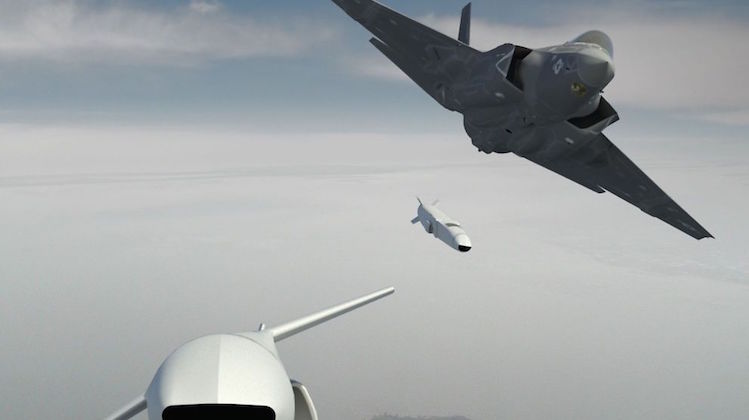Australia will cooperate with Norway on the development of the Joint Strike Missile (JSM) for the F-35A Lightning II JSF.
Under development by Kongsberg Defence and Aerospace, the aim is to ensure the JSM will be available for the RAAF’s forthcoming fleet of F-35As, according to an announcement by Defence Minister Kevin Andrews.
He says: “This agreement builds on the countries’ long-standing bilateral cooperation on research and development of Defence equipment and acknowledges the importance of a robust maritime strike capability to Norway and Australia.”
The weapon is under consideration by the ADF to fulfil the Project JP3023 naval strike weapon for the RAAF’s F-35A, due to enter service from 2018. The naval strike capability is expected to be fielded under the follow-on Block 4 capability upgrade, due to be incorporated into the RAAF’s fleet from around 2023.
The minister’s statement adds: “Participating now in a cooperative JSM development program with Norway will maximise the cost effectiveness of Australia’s contribution and ensure the weapon capability is developed and integrated onto the F-35A in the timeline required by Australia, should the Joint Strike Missile be ultimately considered for acquisition by government later this decade.
“Australian industry will participate in the development of the JSM by providing specialist expertise in missile guidance and control technology.”
The JSM is an air-launched development of the land-based Naval Strike Missile (NSM), and features modifications to the airframe so it can be carried in and launched from the F-35A’s internal weapons bay. It features faceted low-observable shaping and passive sensors that reduces the chance of it being detected on approach to its target.
Speaking at the Avalon Airshow, Deputy Chief of Air Force AVM Leo Davies welcomed the decision: “Australia is an island nation and we naturally have a keen interest in providing a strong maritime defence posture. We welcome this enhanced cooperation to develop JSM into a potential candidate for JP3023.”
Also in attendance were representatives from Kongsberg and BAE Systems, as well as the Norwegian Deputy Defence Minister.
JSF program sub-contractor BAE Systems Australia welcomed the announcement, saying it is a positive step for international collaboration. Director Land and Integrated Systems Graeme Bent says: “We have been working with Kongsberg Defence Aerospace AS on the electronics for a second, independent sensor within the missile to identify hostile radar targets.
“This agreement enables BAE and Kongsberg to continue their industrial cooperation on the passive radio frequency (RF) sensor, supporting its transition to qualification and manufacture.”
BAE says it will deliver a pre-production passive RF sensor for the JSM program in April involving fit checks, system integration and flight-testing for a development-standard missile, designed to demonstrate it provides enhanced operational capability.
Other Australian industry collaborative partners on the development include Qinetiq Australia and the Defence Science & Technology Organisation (DSTO).
Work expected to be undertaken includes addition of the passive RF capability by BAE Systems and the potential for some Australian-built components into the global supply chain.
Flight tests of the JSM are expected to begin this northern spring from a Norwegian F-16 test aircraft with development expected to be completed in 2017.

